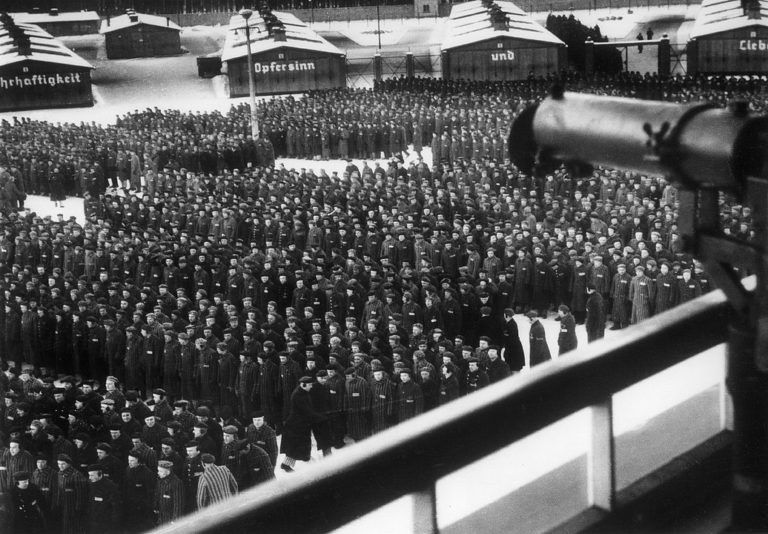
The Holocaust was the Nazi state-sponsored mass murder of millions of Jewish people during World War II. Some six million Jews were murdered during the Holocaust– ultimately two out of three European Jews were killed.
In addition to the six million Jews murdered, the Nazis also killed millions of others including Roma, Jehovah’s Witnesses, LGBTQIA people, people with disabilities and political dissidents.
Many high ranking Nazis just “went missing” after the war
Several high ranking Nazis who oversaw the mass extermination of the Jewish people just disappeared after the war.

Lorenz Hackenholt, who built and operated the gas chamber at the Bełżec extermination camp in Poland, was declared “legally dead” in 1945 but is widely believed to have gone missing. Many historians believe Hackenholt, who is personally responsible for the deaths of hundreds of thousands of prisoners, survived the war and lived under a false name somewhere in Germany.

Heinrich Müller is the highest ranking Nazi to “just disappear” after the war. Müller was head of the Gestapo, the Nazi secret police, and was central in the planning and execution of the Holocaust. He was last seen in Hitler’s bunker in Berlin on May 1st, 1945. Many theories still circulate today on Müller’s ultimate whereabouts– these range from his body being found in August of 1945 and buried in a Jewish cemetery, to the US Army Counter Intelligence Corps secretly using Müller as an intelligence adviser after the war.
Other notable Holocaust participants who disappeared after the war include Max Möller.
The Holocaust was much more than just concentration camps

The larger, big name concentration camps garner a lot of the attention but in reality the Nazis constructed more than 44,000 mass incarceration sites across Europe. These centers included detention centers, ghettos, forced-labor camps and the industrial sized killing camps such as Auschwitz-Birkenau (the largest concentration camp constructed).
By the end of the war there were 20 main concentration camps in Europe and many had their own subcamps and forced labor sites.
Concentration camps and extermination camps

The Nazi concentration camp system included four main extermination camps– Belzec, Chelmno, Sobibor and Treblinka. The sole purpose of these sites was to kill everyone who was sent there (unlike Auschwitz which was both a concentration and extermination camp).
At its peak, Treblinka nearly rivaled Auschwitz in the sheer number of people who were killed there. Between 870,000 and 925,000 people were murdered at Treblinka in Poland (1.1 million were murdered at Auschwitz), about 434,500 Jews were murdered at Belzec, 170,000 were murdered at Sobibor and at least 152,000 were murdered at Chelmno.
Definitions of Holocaust and Shoah
The word Holocaust is derived from the Greek word “holokauston,” which is a translation of the Hebrew word ʿolah, which means “a burnt sacrifice offered whole to God.”
The word Shoah (שואה) comes from the Bible and it means “calamity” and “destruction” in Hebrew. Shoah is the more preferred Hebrew term for the Holocaust.
The global Jewish population still hasn’t recovered

It may still take decades for the global Jewish population to reach pre-World War II numbers. The global Jewish community now numbers near 15 million and researchers say that still falls short of the estimated 16.5 million Jews alive in 1939.
Most survivors did not come from concentration camps

Approximately 3.5 million European Jews survived the Holocaust, with only a small percentage surviving the concentration camps. By 1943, 75-80% of the Jews who were murdered in the Holocaust were already killed and by the war’s end many of the camps were evacuated and destroyed. Between 250,000 and 300,000 Jews in concentration camps survived till the end of the war (approximately 7% of total survivors)– and of these tens of thousands died just days, weeks or months after being liberated.
The largest group of survivors were Jews who managed to escape from German-occupied Europe before or during the war. Others survived by going into hiding, joining partisan groups, or had not yet been rounded up by the Nazis.
Only a handful of survivors are still alive

Today the number of survivors still alive is small. In 2020, an estimated 400,000 Jews who survived or fled the Nazis and their collaborators were alive and that number continues to dramatically decrease with each year. The Claims Conference, which distributes direct compensation to Holocaust survivors, says by 2030 there could be fewer than 100,000 living survivors.
Israel is home to 165,800 Holocaust survivors, with 90% over age 80.
Originally Published Apr 27, 2022 12:03AM EDT
